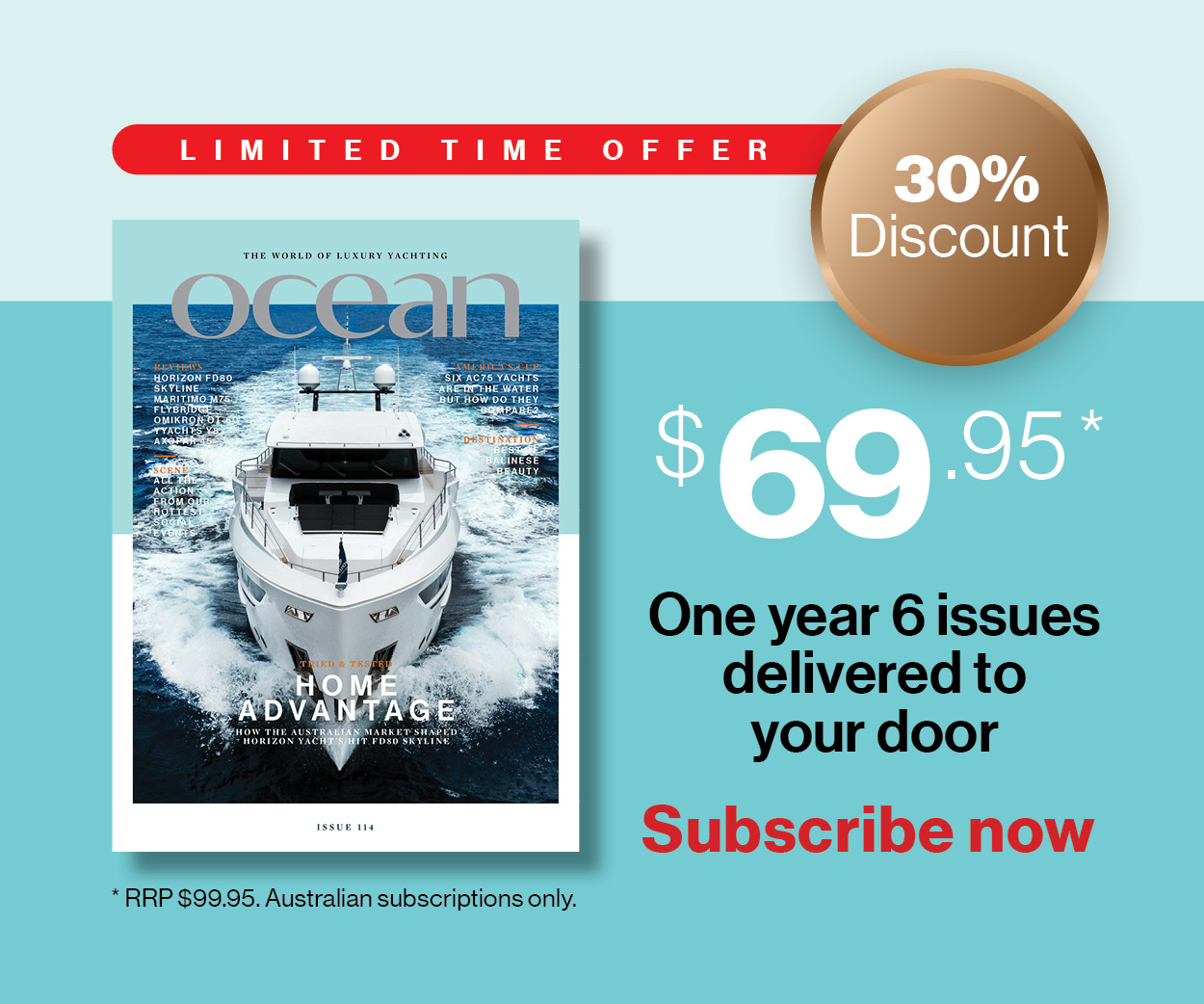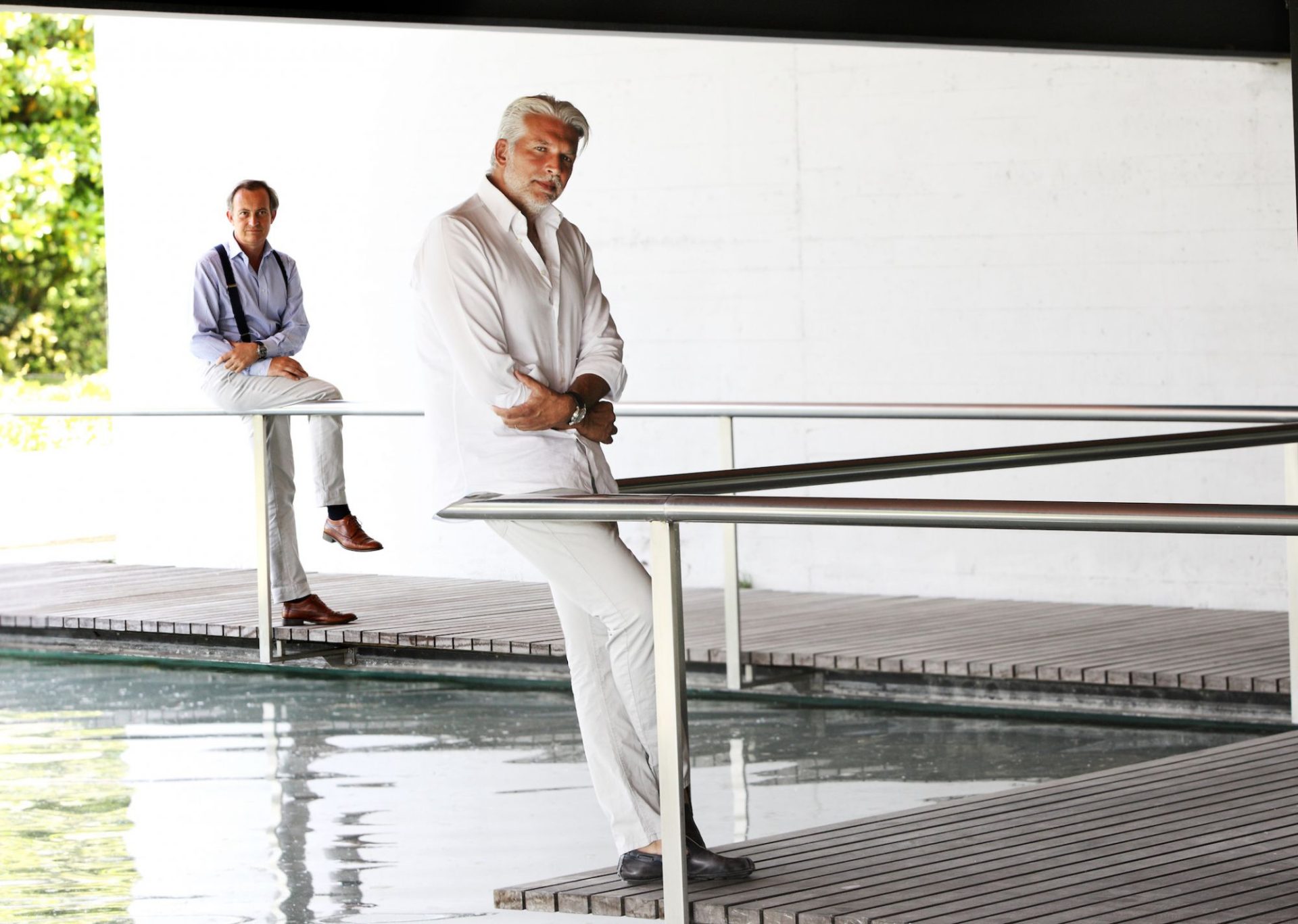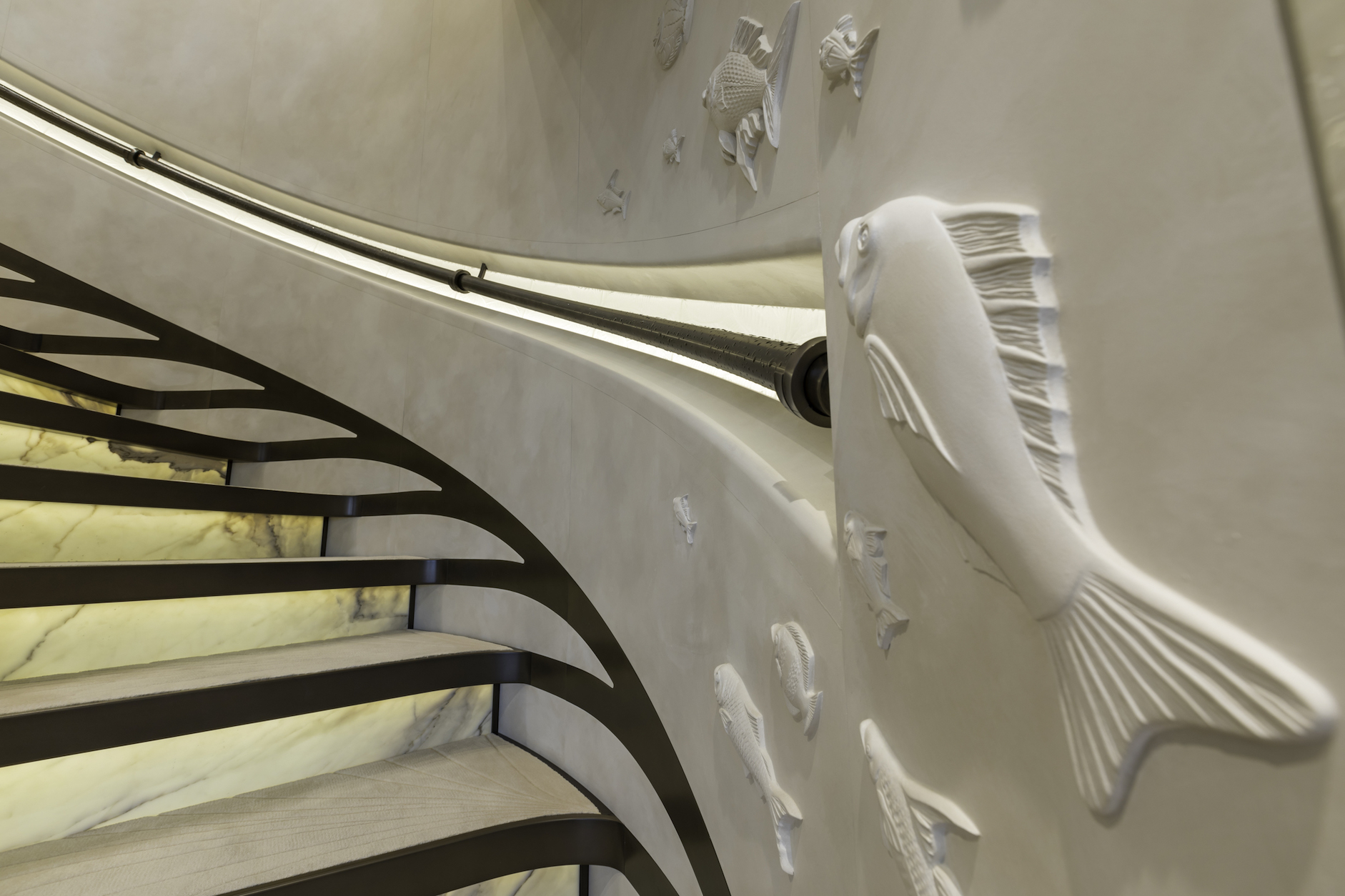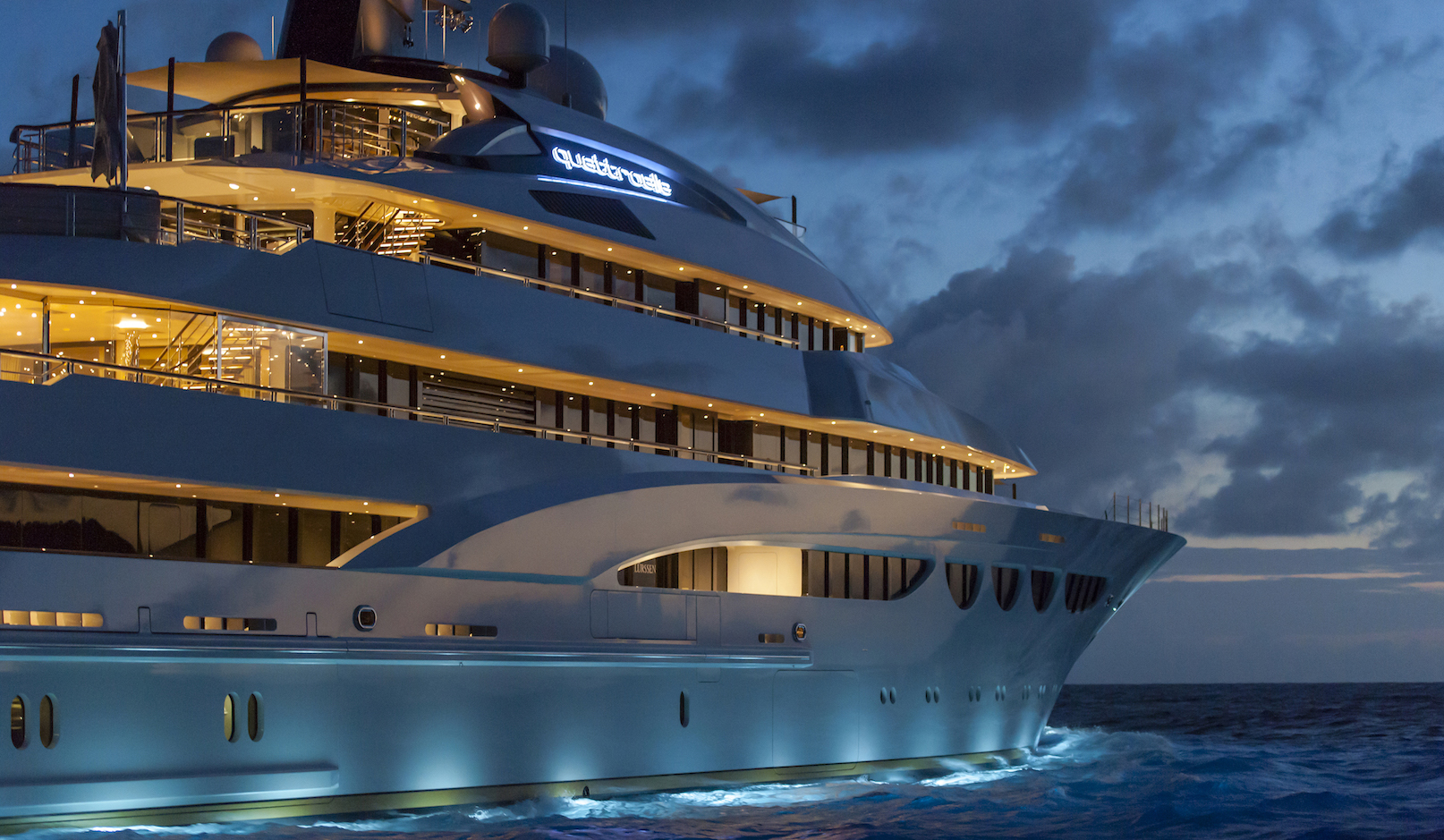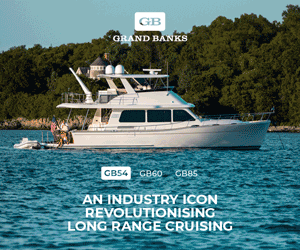Future classic
Just how do you create a superyacht that will become a legend? We take a look at the principles and personalities behind Nuvolari Lenard design studio.
Written by Brittany Cooper
17 April 2019
‘Navigare necesse est – vivere non est necesse.’ This is the credo of yacht design superstars Carlo Nuvolari and Dan Lenard. Its meaning: ‘We have to sail – we do not have to live’ is a fine introduction to what drives the duo, who have salt in their veins, having been mad about boats since boyhood.
Slovenian Lenard was just 22 when he met Italian naval architect Nuvolari at a boat show. They had shared priorities that drew them together: “We both had a passion for navigation, for the sea, and for boats,” says Lenard. “Dan and I love the sea,” confirms Nuvolari. “This is the first thing to remember; I am very surprised when I see that our main competitors are not going to sea: I can’t understand it. My passion is the sea – it is a way of life.”
And so, in 1992, their collaboration as Nuvolari Lenard (NL) began. As their success grew, so did the range of their projects, garnering them a slew of awards for flair and elegance.
These days, of course, NL is one of the biggest names in yacht design, famous for unique superyachts with features like heliports, onboard pools, hammams and submarines.
They’re behind some of the grandest craft on the water for some of the most prestigious shipyards: Oceanco, Lürssen, Amels, Palmer Johnson, Perini Navi, and Ferretti Group’s CRN to name but a few. Some of these designs are sailing yachts, including the largest true sailing yacht in the world, the 106-metre Oceanco S/Y Black Pearl, delivered in early 2018. The pair has also enjoyed the challenge of designing production line designs, like for Beneteau Yachts, and semi-custom, like the Monte Carlo Yachts range.
The senior partners lead a core team of 15 people, operating out of a design centre in Scorzè, just outside of Venice’s historical centre. It’s a busy place, routinely hosting artists exhibiting their sculptures and paintings, and also humming with students from various international design schools. Local companies provide drafting support for final technical drawings.
The Interior Design department, led by NL Partner and Head of Interior Valentina Zannier, includes a showroom where designers and owners ‘build up’ their interiors, selecting fabrics, materials, wood samples and furniture.
We caught up with Carlo Nuvolari for an update on what goes into the company’s biggest projects.
- Can you describe your design process?
Our work is subject to many constraints, such as marketing briefs. We have to stick to the available budget and dimensional limitations, not to mention the technical aspects of engine power and speed. In the beginning, we try not to take this into account. We present an idea we sketched out on a blank sheet of paper and we discuss this around a table. Some tension is essential between our work and that of the design office, which is in charge of completing the project. Things can’t be too easy! We’re creating something new, which is discussed and criticised by the people who take care of the engineering to manufacture it. We try not to create flights of fancy but to create beautiful craft, on solid foundations. Our boats need to be efficient and functional.
- How do you balance luxury, safety and efficiency in your designs while making the client happy?
If you give me a couple of years I may try to answer to this question, but I’m afraid I won’t be able to: I’ll be honest, it’s a difficult achievement and is maybe part of our success. I can say that Dan and I have been facilitated because Dan is a pure designer and I am more technical in design approach – I’m a naval architect. We have a good advantage in that we can see and prevent, at the beginning of our designs, many of the common mistakes that some other designers make.
- In your opinion, what actually defines good style?
Timeless is one of the characteristics we always research when styling a yacht. It is easy to impress clients with futuristic renderings and ‘spaceship’ design, but after few years such designs became inevitably old, unsellable and soon forgotten. This is not what we want: we our yachts to be recorded as advanced when they touch water for the first time and classics after many years. We believe that this is the only way to define a style – any style – as ‘good’.
I must admit that having been raised and living in Italy helps us in managing proportions and style. We are immersed in fine architecture and beauty. Just walking around in Venice is, for me, good training for my eyes and my senses.
- What importance do you give to superyachts’ environmental impact and sustainability?
It’s clear that sailing with motor yachts of grand dimensions is not very sustainable – the only way to get closer to sustainability is to have greater respect for the environment and of course to support and use sailing technology. This is a solution that we appreciate very much, but which without a doubt it represents a more complex and less consumeristic market.
- What’s it like switching from a motor project to sail project like Black Pearl? Are there differences in the approach?
When I said I love going to sea, I didn’t mean only sailing. I own two motor boats in addition to a sailing yacht and a laser. Sailing is of course my preference because it involves many senses and the body.
But do not underestimate motor boating, which I love too: sailing with a motor boat in rough sea is not at all simple. It requires as many skills you need on a sailing boat. All in all, the design approach is the same: start with right proportions; sketch a buildable layout; produce an attractive and timeless style.
- It’s been suggested that Black Pearl will be able to achieve an Atlantic crossing using no fuel. There is a project to scale the same DynaRig system for use on cargo ships. Can you comment on the feasibility of this idea?
You can certainly apply the DynaRig to commercial ships. There are many examples of cruise ships assisted by sails. I believe the future can rely on sail assisted motorships but not sail ships tout court. A lack of wind may cause a loss of speed, which is not acceptable in today’s cargo system.
- For your exterior and interior work on Black Pearl, I imagine you had a lot of collaboration with Oceanco, Dykstra Naval Architects, and the owner. Can you describe this collaboration?
The owner of Black Pearl started the project a long time ago in England, later the project was discontinued. We picked it up in 2012 in its conceptual release (a yacht of 96 metres LOA) without an approved styling. We carried out the design until the launch of the yacht. Our task was to dress this sailing yacht with an exterior style that makes her a yacht and not a ship. This involved many design decisions – particularly to give her the right general proportions in height and length. The final styling shows unmistakable elements of our Italian design and we are sure it will become a timeless design, like many of our yachts.
We cooperated strictly with Oceanco – daily, I would say – and with the owner. He is an engineer with a strong technical background, so we could talk about all details with him. Once the layout was finally locked in, we started to work on exterior style proposals for owner’s approval. Later came the long job of passing all information to Oceanco.
- How about your chief interior designer Valentina Zannier’s historical research for this project – what inspired her avenue of research?
Valentina teamed up with the owner, and with French architect Gerard Villate, to design the yacht’s interior. The design represents a philological research study of Louis XVI style, with a number of interspersed contemporary elements, including art deco touches masterfully executed by the builder. Rich materials such as crystal, mahogany, elm burr, and ebony inlays, gilded bronze, marble, onyx, and silk were liberally used in the décor. The result is a very elaborate and rich interior, which represents the personal taste of the owner well.
- Can you describe the feeling of seeing your designs come to fruition after so many years of work?
Of course we are proud, but we look always forward. Past is past. Looking at the result is helpful for identifying and avoiding any defects, not good for creating something new.
- What are your most exciting projects at the moment; which yards are you working with?
Major projects at various stages of build are Lürssen 140-metre Project Redwood [a global explorer with two helipads, due for completion in 2020]; Project NL303, a CRN 62-metre motor yacht NL303; and Lürssen’s 115-metre Enzo. We are also continuing work on all the yachts produced by MCY Monte Carlo Yachts, as well as Beneteau’s GT and MC Series, and the interior of Toyota’s 22-metre Lexus yacht. But our most beloved project is: the next.


